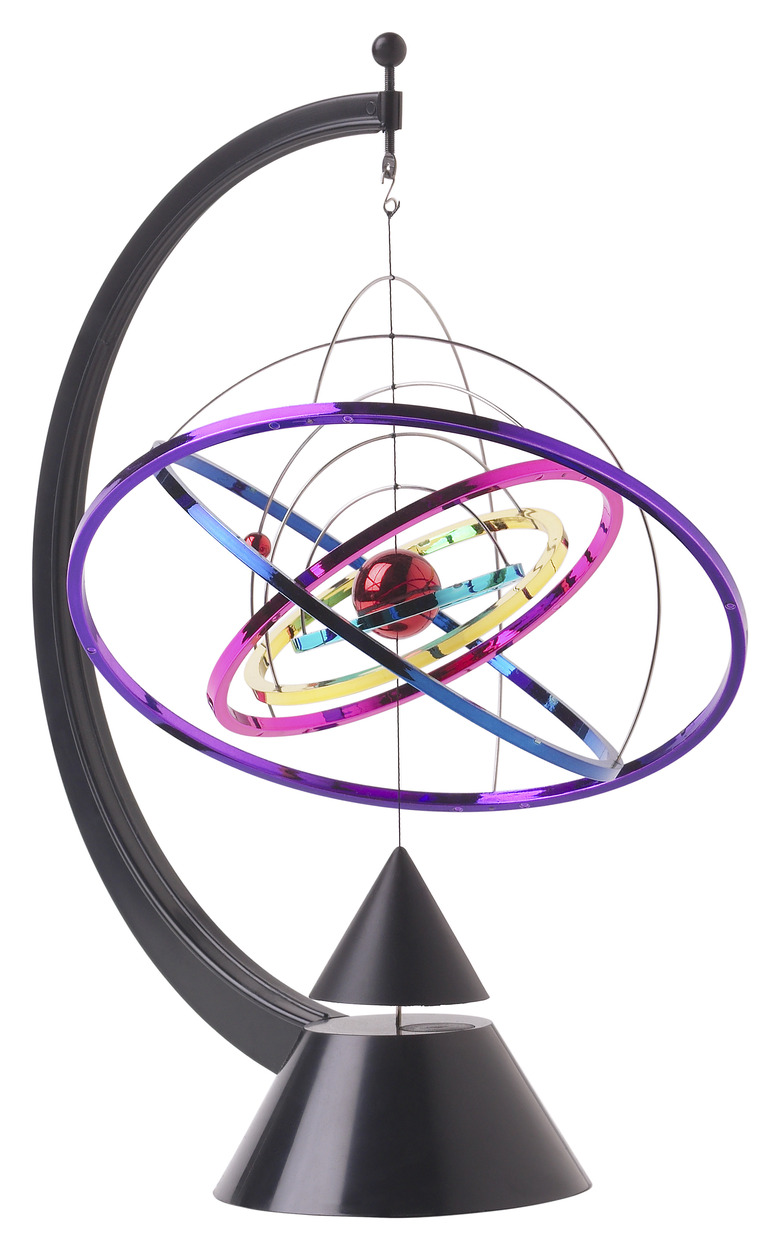How To Make A Spinning Model Of An Atom
Every physical object is made of atoms. Building a model of an atom allows students to better understand the structure of an atom as well as how to read the periodic table. Models of atoms can be extremely useful in the classroom, not only as homework assignments but also to display the general composition of atoms. Spinning models allow teachers to manipulate the model while explaining the different components that make up an atom.
The Electron Rings
Step 1
Research the specific atom you wish to make a model of. Pay particular attention to the energy levels and the sub-shells. For example, a nitrogen atom has two energy levels. The first energy level contains only the s sub-shell and the second energy level contains the s and p sub-shells.
Step 2
Draw a simple sketch of your atom, including the energy levels and sub-shells.
Step 3
Lay out the craft rings that will represent your energy levels and sub-shells. You might need more than one ring for each energy level. Sub-shells should be close together — craft rings 1/2 to 1 inch in size difference — while energy levels can be further apart — 2 to 5 inches, depending on the atom and the size of your model.
Step 4
Use wire cutters to make a cut in each of the craft rings.
Step 5
Thread beads onto the craft rings to represent electrons. Follow your diagram sketch as to how many electrons to include for each sub-shell, working form smallest to largest. For example, a nitrogen atom will have three electrons on the first ring (the p sub-shell), two electrons on the second ring (2s sub-shell) and three electrons on the third ring (the 1s sub-shell).
Step 6
Add a drop of glue to each bead to hold it in place. Seal the cut in each craft ring by positioning a bead (electron) over the cut when gluing it.
The Nucleus
Step 1
Select two colors of small pom-poms to represent protons and neutrons. Designate one color to each.
Step 2
Attach your proton pom-poms to a Styrofoam ball using a hot glue gun or a dab of quick-drying craft glue. The number of protons an atom contains is determined by the atomic number of the element.
Step 3
Attach your neutron pom-poms to the Styrofoam ball, dispersing them among the proton pom-poms. Stable atoms have the same number of electrons as they have protons.
Step 4
Screw a small ceiling hook into the top of the Styrofoam ball. Add a drop of glue to secure it.
Assembling The Atom
Step 1
Attach a small swivel hook to each of the craft rings — one per craft ring — and to the small ceiling hook embedded in your nucleus.
Step 2
String the craft rings together using fishing line so that each smaller ring is evenly centered within each larger ring. Attach the fishing line to the swivel hooks with a simple double knot and trim away excess line. You can add a drop of glue to each knot to further secure it.
Step 3
Add the nucleus by stringing the line from the smallest ring to the swivel hook attached to the nucleus. The nucleus should be as centered as possible.
Step 4
Attach a loop of line to the largest craft ring.
Step 5
Hang your craft ring, using the loop of line on the largest craft ring, from a string, ceiling hook or craft display stand. Each segment of the model will spin freely.
Things Needed
- Craft rings
- Wire cutters
- Beads
- Glue
- Swivel hooks
- Styrofoam ball
- Colored pom-poms
- Ceiling hook
- Fishing line
TL;DR (Too Long; Didn't Read)
Craft rings, beads, Styrofoam balls and pom-poms can be purchased at craft stores.
Use small Styrofoam balls or plastic bouncing balls instead of pom-poms for the nucleus' protons and neutrons.
Create a stand from clay and press the bottom edge of the outermost craft ring into it to create a tabletop spinning atom. The clay stand needs to be able to support the weight of the entire model without tipping over.
Warning
Use caution when cutting the craft rings; wire cutters and cut metal edges are sharp and can cause injury.
No atom model will be completely accurate. An accurate model of an atom with a 1 inch nucleus would be over a mile wide.
Cite This Article
MLA
Wood, Cristel. "How To Make A Spinning Model Of An Atom" sciencing.com, https://www.sciencing.com/make-spinning-model-atom-12012284/. 24 April 2017.
APA
Wood, Cristel. (2017, April 24). How To Make A Spinning Model Of An Atom. sciencing.com. Retrieved from https://www.sciencing.com/make-spinning-model-atom-12012284/
Chicago
Wood, Cristel. How To Make A Spinning Model Of An Atom last modified March 24, 2022. https://www.sciencing.com/make-spinning-model-atom-12012284/
